If you’re like most gardeners, the sight of weevils in your garden is enough to make you shudder. These pesky little bugs can do a lot of damage to plants, so it’s important to get rid of them as soon as possible. In this article, we will discuss everything you need to know about getting rid of weevils in your garden. We’ll cover common questions such as “what are weevils?” and “how do I get rid of them?” and provide some helpful tips for eradicating these pests. So read on and learn how to protect your garden from these harmful insects!
Weevil Behavior
Weevils are a type of beetle that have long, slender snouts. Many of these pests are plant-eaters, which can cause serious damage to crops (e.g., grains) and stored food products (e.g., flour). Weevil infestations often go unnoticed until significant damage has been done. [1] ,[2]
Life Cycle of Weevils
Weevils go through four stages in their lifecycle: egg, larva, pupa, and adult. The female weevil lay their eggs on the undersides of leaves or near/inside food sources like grains, nuts, and beans. Once the eggs hatch, the larvae will burrow into the soil to feed on the plant roots. This feeding can cause extensive damage to crops and gardens. After a few weeks of eating and growing, they will spin a cocoon around themselves and transform into pupae. Lastly, the adult weevils will emerge from the cocoons ready to mate and start the cycle all over again.
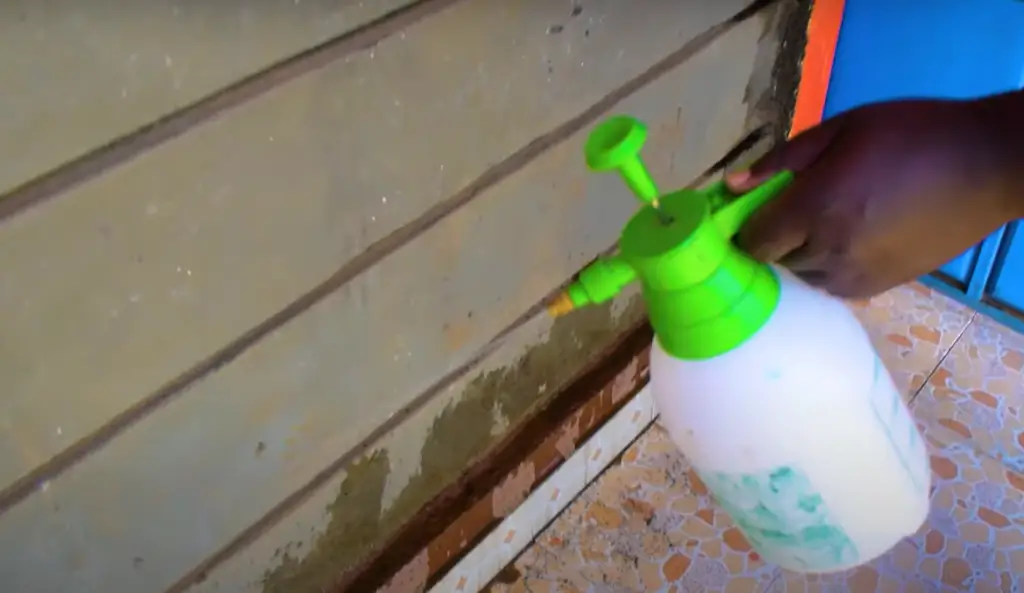
While weevils typically only live for about two months, they can lay hundreds of eggs in that time which makes getting rid of them a challenge.
Appearance of Weevils
Weevils are small, dark brown or black beetles with long bodies up to 10mm long. They’re often found in flour, grains, and cereals. You might see them crawling around your pantry or cupboards, or you might find them in your food.
Most weevil species are harmless to humans, however, there are a few species that can be problematic for your garden. For example, the rice weevil can infest stored rice and other grains. The wheat weevil damages wheat crops and stored wheat products.
If you have a weevil infestation, you’ll likely see adult beetles and larvae. The larvae are small, white grubs with brown heads. They’re usually found in food products. The adult beetles are dark brown or black and have a long snout. You might see them crawling around your pantry, cupboards, or food. [2]
Types of Weevils
If this wasn’t enough to make you never want to see a weevil again, there are actually different types of weevils! Here are some of the most common to be aware of.
Rice weevil
The rice weevil is a type of storage pest that, as its name suggests, feeds on grains like rice.
They’re particularly fond of whole grains, so if you see them in your pantry, it’s likely that they’ve infested items like bags of rice or quinoa.
Rice weevils are difficult to get rid of because they can survive without food for long periods of time. Female weevils can lay eggs inside of grains, and the larvae will hatch and start eating the grain from the inside out. If you think you have a rice weevil infestation, the best course of action is to throw away any affected food and thoroughly clean your pantry.
Vine weevil (Otiorhynchus sulcatus)
The wine weevil is a small, dark beetle that can be found in vineyards across Europe. They get their name from their love of eating grapevines, and even worse plant roots which can cause serious damage to crops.
Corn weevil (Sitophilus zeamais)
The corn weevil is a type of snout beetle. They’re dark brown or black and have a long slender nose, hence their name “snout beetle.” These pests are particularly damaging to stored grains like rice, wheat, and corn.
Boll weevil
The boll weevil is a type of beetle that feeds on cotton plants. They lay their eggs inside the cotton bolls, which damages the plant. Boll weevils are difficult to control because they can fly long distances and quickly adapt to different types of cotton plants.
Rose weevil (Grapholita janthinana)
The rose weevil is a serious pest of roses, both in the garden and as a cut flower. Adults are about five millimeters long and have a brown or reddish body with light-coloured patches. The head is large and elongated with chewing mouthparts. Females lay their eggs inside young rose buds where the larvae develop and feed on the developing petals. This damage often renders the flowers unsellable. [3] ,[4] ,[5] ,[6]
Why Are Weevils a Major Threat to Your Plants?
Weevils are a major threat to your plants because they’re able to reproduce quickly and easily. As we mentioned, female weevils can lay up to 500 eggs in their short 2 month lifetime, which means that the population of weevils can increase very rapidly. In addition, weevils are able to chew through plant leaves, stems, and roots, which can seriously damage or kill your plants in a rapid manner.
Otherwise, you risk losing your entire crop. [7] ,[9]
Symptoms of Weevils Infestation
The first step in getting rid of weevils is to identify whether or not you have an infestation. Here are some common symptoms of weevil infestation.
Withered or sick plants
If you notice your plants are wilting or looking sick, it could be a sign of weevil infestation. Check the underside of leaves for small, brownish-black beetles.
Notches on plants or leaves
One of the most common symptoms of weevil infestation is finding notches on the leaves or plants in your garden. These notches are usually about one-eighth of an inch long and are caused by adult weevils eating the foliage of your plants.
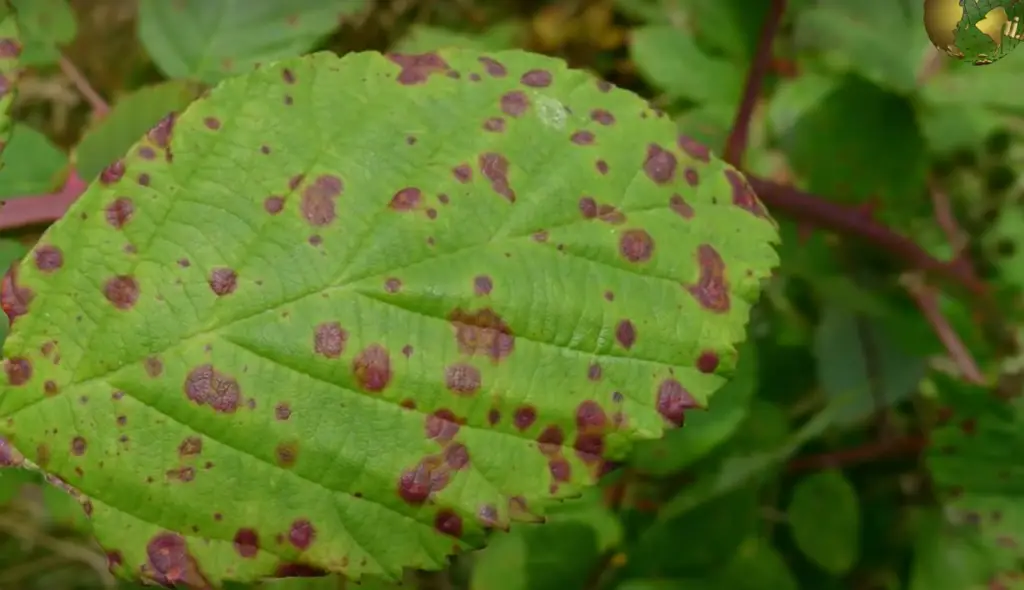
You encounter adult beetles or larvae in your garden
These are the most common signs of weevil infestation. Adult weevils are tiny black insects with long noses. Larvae look like small, white grubs with brown heads. If you see either of these in your garden, it’s likely you have an infestation. [4] ,[7]
Which Plants are the Most Vulnerable?
While weevils can infect any type of plant, they’re especially fond of crops like wheat, corn, and rice. This is because these crops provide an ample food source for the adult beetles and their larvae. In addition, weevils are attracted to plants that produce a lot of nectar, such as roses. If you have any of these plants in your garden, it’s important to be on the lookout for signs of weevil infestation.
There are a few different ways that you can get rid of weevils from your garden. You can use chemical insecticides, natural methods, or a combination of both. Let’s take a look at each method in more detail.
Getting Rid of Adult Weevils
We will start with how to get rid of the adult weevils, as they are the most likely to cause damage to your plants.
Pick them up manually
The easiest way to get rid of adult weevils is to simply pick them off your plants by hand. Inspect your plants regularly at night and remove any weevils you see. This method is most effective if you catch the problem early, before the weevils have had a chance to lay too many eggs.
Always wear gloves and prepare to dispose of the weevils immediately after picking them off, as you don’t want them anywhere near your garden again.
The easiest option to dispose of weevils is to drown them. Fill a bucket with water and drop the weevils in, then leave them to drown. You can add a little dish soap to the water to make sure they don’t float back up to the surface.
If you have a lot of plants, or if the infestation is particularly bad, this method may not be practical. In that case, there are a few other methods you can try. [4] ,[7] ,[8]
Set barriers
A physical barrier can be effective in keeping weevils away from your plants. One option is to surround your plants with a layer of fine mesh. This will keep the weevils from being able to get to the plants, but will still allow water and sunlight through. [7]
Use diatomaceous earth
Diatomaceous earth is a natural substance made from the fossilized remains of algae. It’s safe to use around plants and animals, but it’s deadly to insects.
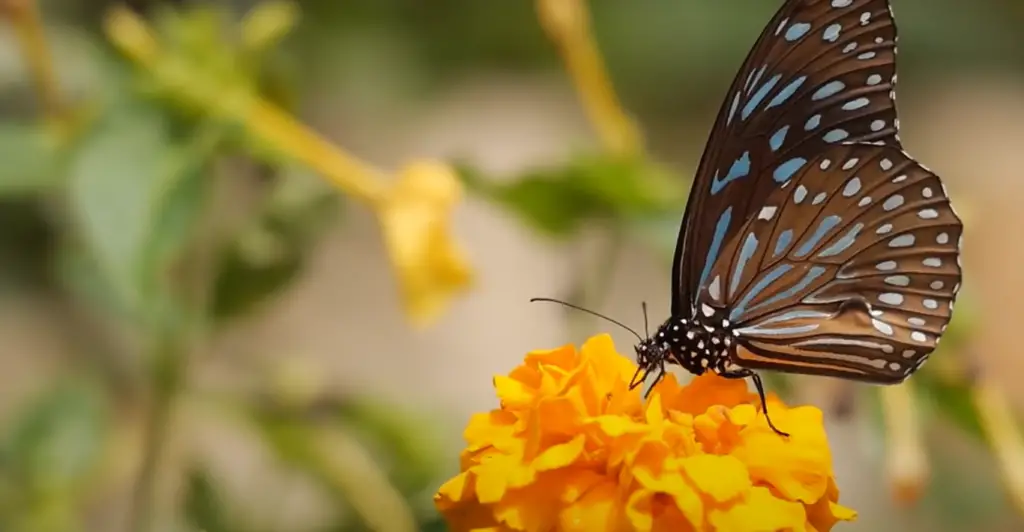
To use diatomaceous earth, simply sprinkle it around the base of your plants. The weevils will come into contact with it and die. You’ll need to reapply it after heavy rainfalls or if you notice the infestation getting worse. [10]
Set sticky traps
Sticky traps are an easy and effective way to get rid of adult weevils. You can buy these traps at most hardware or garden stores, or you can make your own by coating cardboard or paper with a sticky substance like Vaseline.
Place the traps near the plants that are infested with weevils, and check them regularly to see how many weevils have been caught. When the trap is full, dispose of it and set a new one.
You can also try using pheromone traps, which are specially designed to attract and trap adult weevils. These can be somewhat expensive, but they may be worth the investment if you are having a lot of trouble with weevils.
Pheromone traps work by releasing a synthetic version of the weevil’s mating scent, which attracts other weevils to the trap. These traps can be effective, but they must be replaced regularly to continue working. [4] ,[10] ,[11]
Use nematodes
Nematodes are tiny parasitic worms that can be used to control a variety of pests, including weevils. They work by entering the weevil’s body and releasing bacteria that kill the pest from the inside out.
You can buy nematodes online or at some garden stores. Follow the instructions on the package for how to prepare and apply them. Keep in mind that nematodes can only be used in warmer seasons, like later spring or summer.
Nematodes are safe for humans, animals, and plants, but they will kill any insect they come into contact with, so use them with caution.
Use a weevil killer spray
You can buy weevil killer spray from most garden stores. Follow the instructions on the packaging, but generally, you will need to spray the plants in early morning or late evening when the weevils are less active.
Be sure to spray all of the plant, including the underside of the leaves where the weevils like to hide. You may need to reapply the spray every few days until you see a reduction in the number of weevils.
As with any pesticide, be sure to read and follow all safety instructions before using it in your garden.
Weevil killer sprays should only be used as a last resort as they can also kill beneficial insects like bees and ladybugs. If possible, try one of the other methods first. [7] ,[8]
There are a few different methods you can try to get rid of adult weevils. Picking them off by hand is the easiest way, but if you have a lot of plants or a bad infestation, you may need to try something else. Sticky traps and pheromone traps are both effective ways to catch and kill adult weevils. Whichever method you choose, make sure to check your traps regularly and dispose of them when they are full.
Getting rid of larvae
The larvae are the young of the weevil, and they are often more difficult to control than the adults. Larvae typically spend their time in the soil near your plants, feeding on the roots. This can damage or kill your plants, so it’s important to get rid of the larvae as soon as possible.
Introduce pathogenic nematodes to your garden
As we already mentioned, pathogenic nematodes are a type of parasitic worm that can kill weevil larvae.
The nematodes will enter the bodies of the larvae and release bacteria that kill them from the inside out.
Drench compost with insecticide
If you have a compost pile, it may be attracting weevil larvae. To get rid of them, simply drench the compost with an insecticide. Be sure to follow the instructions on the package, and apply the insecticide in early morning or late evening when the larvae are less active. Be cautious when using this method.
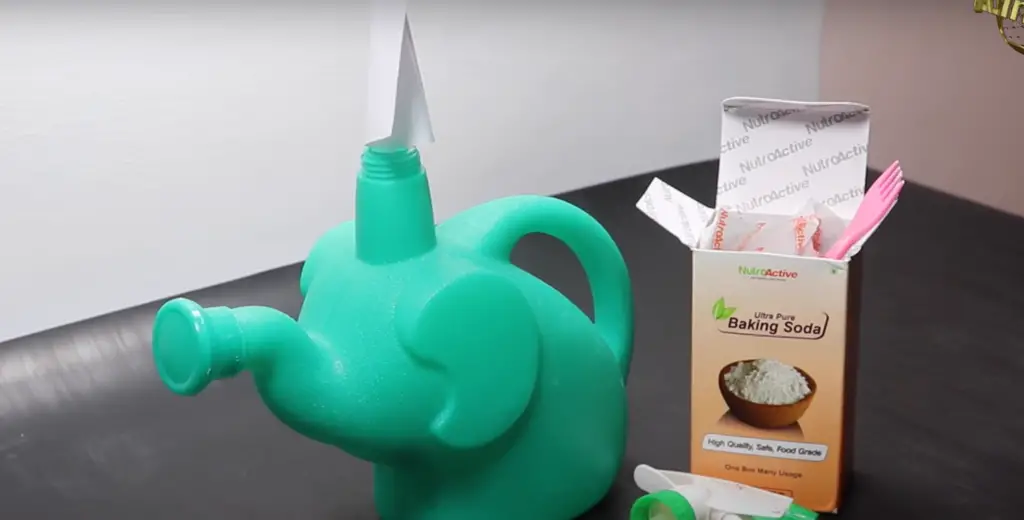
You can also try adding diatomaceous earth to your compost pile. This is a type of fossilized algae that is sharp and abrasive. When the weevil larvae crawl through it, it will damage their bodies and kill them.
Preventing Weevils
The best way to deal with weevils is to prevent them from getting into your garden in the first place.
Maintain your garden well
Weevils are attracted to weak and stressed plants. To prevent them from getting into your garden, make sure to keep your plants healthy and strong. This means watering them regularly, fertilizing them as needed, and giving them the proper amount of sunlight. A healthy garden is less likely to be attractive to weevils.
If you do find weevils in your garden, be sure to remove any affected plants and dispose of them immediately. This will help prevent the weevils from spreading to other parts of your garden.
Weeding is also important in preventing weevils. Weeds can serve as hosts for weevil larvae and other pests, so keeping your garden free of them will help reduce the number of weevils in your garden. [1] ,[7]
Rotate your crops
Weevils are attracted to certain crops, so if you plant the same thing in the same spot year after year, you’re more likely to get an infestation. To prevent this, simply rotate your crops. Plant something different in the spot where you had weevils last year, and they should stay away. Weevils particularly like legumes, so if you have a lot of these in your garden, be sure to rotate them often. [10]
Always check the compost before planting in containers
If you’re planting in containers, always check the compost before adding it to your pots. Weevil larvae can sometimes sneak into bags of compost, so it’s important to make sure there aren’t any in there before you plant. Same precautions apply to the soil you buy from the store.
If you suspect your compost or soil has weevil larvae in it, you can try solarizing it. Simply spread it out in a thin layer and put it in direct sunlight for a few days. The heat will kill the larvae. [7]
Introduce wild predators to your garden
There are a few different predators that will eat weevils, so if you introduce them to your garden, they can help keep the population under control. Ladybugs, lacewings, and parasitic wasps are all effective at eating weevils. You can buy these insects from a garden center or online, or you can try to attract them to your garden with plants that they like.
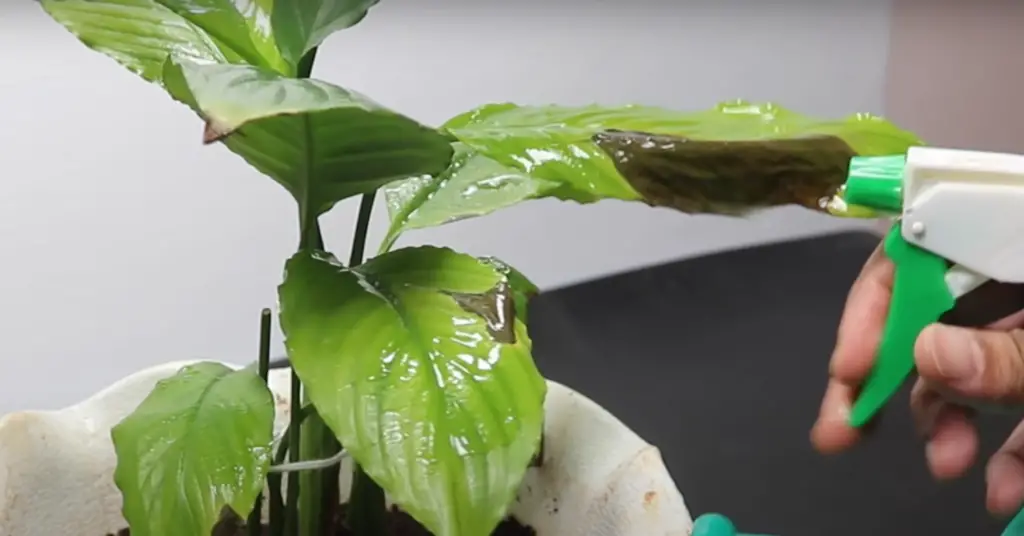
Of course you shouldn’t forget about birds. Many birds will also eat weevils, so if you have bird feeders in your garden, they can help keep the population down.
If you keep chickens, they will also eat weevils. Just be sure to keep them out of your garden when you’re not there to supervise, as they can also damage your plants.
Check on your plants regularly
Even if you take all of these precautions, it’s still a good idea to check on your plants regularly. This way you can catch an infestation early and deal with it before it gets out of control.
Weevils are small, so they can be hard to spot. Look for tiny holes in the leaves of your plants or for chewed-up edges. You might also see eggs or larvae on the underside of leaves. If you see any of these signs, carefully remove the affected leaves and dispose of them immediately.
Inspect all food products before you bring them into your home. If you do find weevils in pantry foods, discard the item immediately. To prevent an infestation, store dry goods in airtight containers. You can also try freezing items for at least four days to kill any eggs or larvae present. [7]
Utilize the barriers
There are a few different barriers you can use to keep weevils out of your garden.
You can try using a floating row cover. This is a type of fabric that covers your plants and blocks pests from getting to them. Just be sure to remove it when the plants start to flower, as it will also prevent pollinators from getting to them. Row covers can be used year-round, but they’re especially helpful in the spring when weevils are laying their eggs.
You can also try wrapping the trunks of your trees with chicken wire. This will prevent weevils from crawling up into the trees and eating the leaves. [7] ,[10]
Chemical Weevil Killers
Now, if you’ve tried all of these things and you’re still having problems with weevils, you can try using a chemical insecticide. But which one should you use? We will discuss some options as well as the precautions you should keep in mind while using it.
Imidacloprid
Imidacloprid is a systemic insecticide, which means it’s taken up by the plant and distributed throughout its tissues. This makes it effective at killing pests that eat the leaves of plants, like weevils.
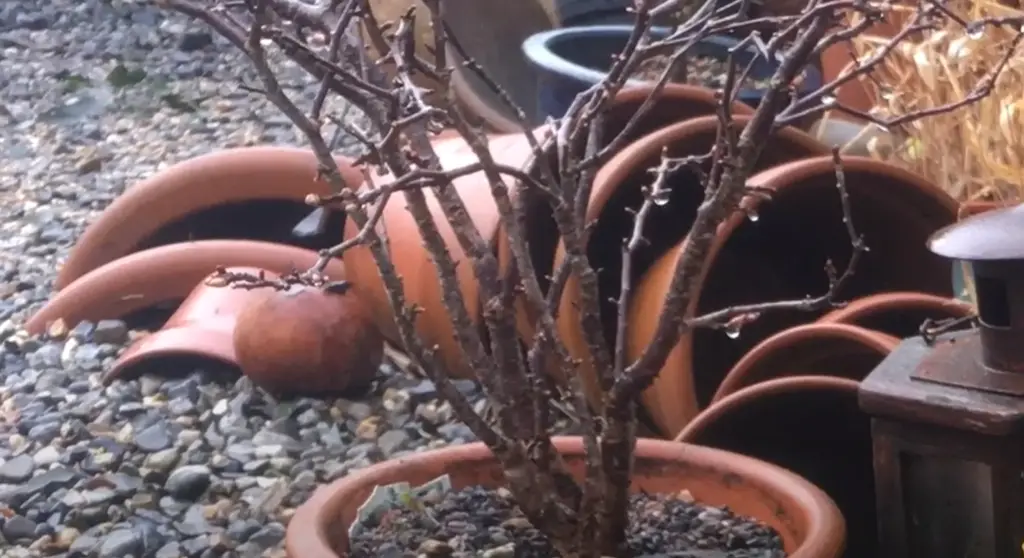
It’s relatively safe to use around humans and animals, but you should still take precautions when using it. Be sure to read the label carefully and follow the instructions and wash the vegetables thoroughly before eating them, or avoid applying it on edible plants altogether.
You can apply imidacloprid to your plants as a foliar spray or a soil drench. If you’re using it as a foliar spray, be sure to apply it in the early morning or evening when bees are less active. [1]
Acetamiprid
Acetamiprid is a neonicotinoid insecticide, which means it works by affecting the nervous system of insects. This type of insecticide shouldn’t be used on edible plants, as it can be harmful to bees.
If you decide to use acetamiprid, be sure to apply it early in the season before the flowers bloom. This will minimize the risk to bees and other pollinators. You can apply it as a soil drench or as a foliar spray.
Just remember that all insecticides are potentially harmful, so use them sparingly and only when absolutely necessary. [4]
Consideration when using a chemical weevil killer
As we have mentioned, even though these insecticides are relatively safe to use, you should still take precautions when using them. Be sure to read the label carefully and follow the instructions. Wash the vegetables thoroughly before eating them.
Use the insecticide that can be used on edible plants
It is important to make sure that the insecticide you are using is one that can be used on edible plants. This will ensure that your food is not contaminated with chemicals.
Some weevil killers are systemic, meaning they are absorbed by the plant and then kill the weevils when they try to eat the plant. These products can be effective, but they need to be applied according to the instructions on the label.
Don’t use chemicals on flowers
If you have flowers in your garden, it is important not to use chemicals on them. This is because the chemicals can harm the flowers and make them less likely to bloom. But the main reason you absolutely should avoid this is bees.
Bees are attracted to flowers for their pollen and nectar. When they collect these things, they spread the pollen around, which helps plants reproduce. If you use chemicals on your flowers, it can harm the bees and make it difficult for them to do their job properly. This can eventually lead to a decline in the population of bees, which would be devastating for the environment.
Consider other animals and plants
It is also important to consider the other animals and plants in your garden when using any type of pesticide. You don’t want to harm anything else in your efforts to get rid of the weevils!
If you have to use toxins on your garden, always make sure to keep them away from areas where children or pets could come into contact with them. [1] ,[4]
Biological Weevil Killers
There are also some biological weevil killers that you can use. These are usually fungi or bacteria that infect and kill the weevils. They are generally safe to use around other animals and plants, but you should still use them rationally.
Botani-Guardian
Botani-Guardian is an organic weevil control that uses a beneficial fungus to kill the adults and larvae of many types of weevils. The active ingredient, Beauveria bassiana, is a natural enemy of many insects and has a long history of use in organic agriculture. Botani-Guardian is safe to use around children and pets, and it will not harm beneficial insects like ladybugs and bees. You can apply it to your garden as a soil drench or foliar spray, and it will remain effective for up to two weeks.
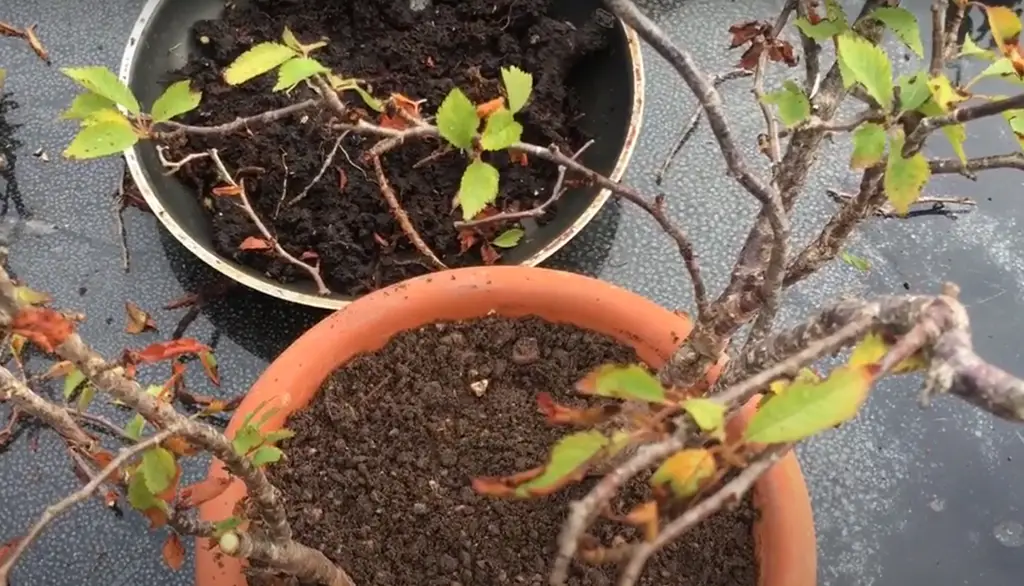
IPM is a long-term, eco-friendly approach to pest management that uses a variety of techniques to control pests. In addition to using biological controls like Botani-Guardian, you can also use physical controls like traps and barriers, and cultural controls like crop rotation and hand-picking.
Spinosad
If you’re looking for an organic way to get rid of weevils, spinosad is a good option. This biological insecticide is made from a soil dwelling bacterium and kills insects by causing them to stop feeding. Spinosad is safe to use around children and pets and can be applied as a spray or dust.
To use spinosad, mix it with water according to the directions on the package and apply it to your garden plants. You’ll need to reapply every few days until the weevils are gone.
Neem Oil
Neem oil is a natural extract from the neem tree. It’s a popular choice for gardeners because it’s effective at killing many different types of pests, including weevils. Neem oil works by disrupting the life cycle of the pest, preventing them from reproducing. You can apply neem oil to your garden using a spray bottle or watering can. [1]
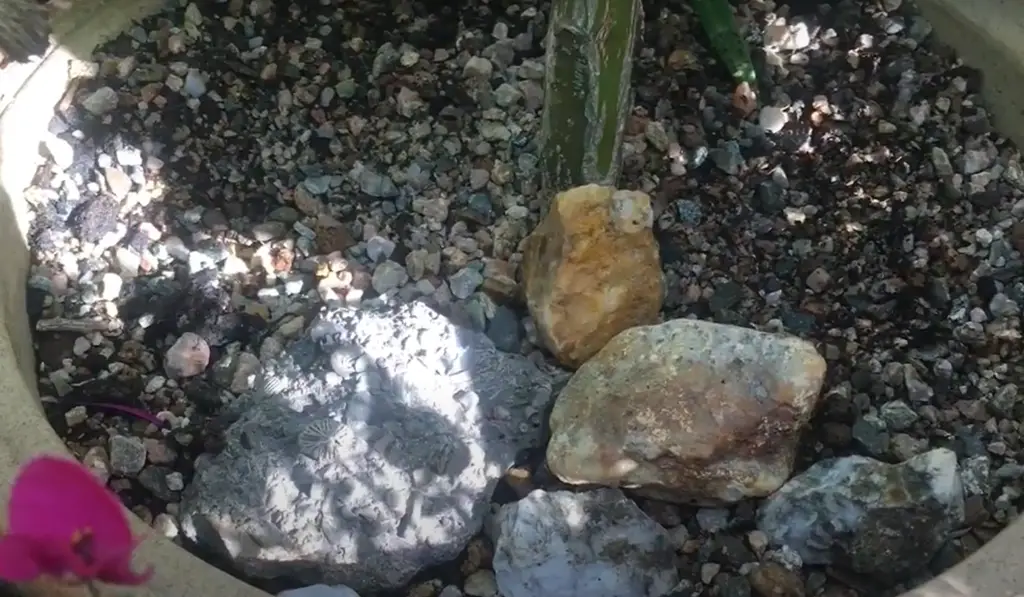
To make a neem oil spray:
- Gather one teaspoon of neem oil, one teaspoon of mild soap and one gallon of water.
- Emulsify the oil with soap
- Mix the solution with water
- Pour the mixture into a clean spray bottle and shake well to combine.
- Spray the solution onto affected plants, being sure to cover both the tops and bottoms of leaves.
- Repeat every few days until the infestation is gone. [12]
Comparison of Methods for Getting Rid of Weevils in the Garden
Weevils can be a significant problem for gardeners, as they can damage plants and crops. There are several methods for getting rid of weevils, each with its advantages and disadvantages. This table compares various indicators of the effectiveness of different weevil control methods.
| Method | Effectiveness | Cost | Ease of Use | Environmental Impact |
|---|---|---|---|---|
| Handpicking | Low | Free | Easy | Low |
| Neem Oil | Medium | $$ | Moderate | Low |
| Beneficial Nematodes | High | $$$ | Moderate | Low |
| Pyrethrin | High | $$$ | Easy | High |
| Diatomaceous Earth | Medium | $$ | Moderate | Low |
The table compares five different methods for getting rid of weevils in the garden: handpicking, neem oil, beneficial nematodes, pyrethrin, and diatomaceous earth. The effectiveness of each method is rated as low, medium, or high, based on how well it controls weevils. Cost is rated as $ (low), $$ (moderate), or $$$ (high), and ease of use is rated as easy, moderate, or difficult. Finally, the environmental impact is rated as low or high, based on the impact of the method on the environment.
From the table, we can see that handpicking is the least effective method, but it is also the cheapest and easiest to use. Neem oil and diatomaceous earth are moderately effective, with moderate costs and ease of use. Beneficial nematodes and pyrethrin are both highly effective but come with higher costs and potential environmental impact. Gardeners can use this table to weigh the advantages and disadvantages of each method and choose the one that best fits their needs.
FAQ
Does vinegar keep weevils away?
It can keep the weevils out of certain areas but it is ineffective at getting rid of an infestation.
How long does it take to get rid of weevils?
This depends on the severity of the infestation and how many weevils are present. Generally, it could take anywhere from a few days to up to a week or two to see results. However, as with any pest problem, continued vigilance is necessary to ensure they don’t come back.
How long do weevils live without food?
Weevils can live for long periods of time without food, depending on the species. Some weevils can go for a few weeks or even months without eating anything. However, most weevils will eventually die if they don’t have access to food.
Where do weevils come from?
Weevils are attracted to gardens because of the food sources that are present. Fruits, vegetables, and grains are all weevil favorites. Weevils will also lay their eggs in these same food sources, which is how they end up in your garden in the first place.
There are a few different ways that weevils can make their way into your garden. One way is if you accidentally bring them in yourself on contaminated plant material or soil. Another way is if they fly or crawl in from an adjacent property. Once they’re in, it’s only a matter of time before they start eating and laying eggs.
What are some signs that you may have a weevil problem in your garden?
If you notice that your plants are wilting or dying for no apparent reason, it could be a sign of weevil activity. These pests can also cause leaves to turn yellow or brown and produce less fruit. If you see small, dark-colored beetles crawling around your plants, they may be weevils.
Another way to tell if you have a weevil problem is to look for their telltale signs: small, round holes in leaves or fruits. You may also see the insects themselves, which are small, dark-colored beetles.
What are your top tips for getting rid of weevils in the garden?
The best way to get rid of weevils in the garden is to remove their food source. This means getting rid of any weeds, as well as any dead or rotting vegetation. You should also make sure to keep your garden clean and free of debris. If you have a compost bin, make sure it is covered so that the weevils can’t get to the food inside.
If you have an infestation of weevils, you may need to use a pesticide. There are many different pesticides available, so be sure to read the label carefully and choose one that is safe for use around children and pets. Apply the pesticide according to the directions on the label, and be sure to follow up with regular monitoring to make sure the weevils are gone.
Weevils can be a nuisance, but with a little effort, you can get rid of them for good.
Are there any home remedies that can help get rid of weevils?
There are a few home remedies that may help get rid of weevils. One is to mix together equal parts of flour and salt. Then, sprinkle this mixture around the perimeter of your garden beds. Another option is to make a trap by placing a piece of fruit or vegetable inside a jar or container with a small opening. The weevil will enter the container in search of the food, but won’t be able to escape. You can also try planting certain herbs and flowers that weevils don’t like, such as basil, marigolds, and garlic. Finally, you can use an insecticide designed specifically for weevils. Be sure to follow the instructions on the label carefully so that you don’t harm other beneficial insects in your garden.
How do you prevent weevils from invading your garden?
The best way to prevent weevils from invading your garden is to keep your garden clean and free of debris. Weevils are attracted to gardens that are cluttered and full of rotting vegetation. Keep your compost pile away from your garden, and make sure to clean up any fallen leaves or other debris promptly. You should also avoid overwatering your plants, as damp conditions can attract weevils. If you do spot weevils in your garden, take action immediately to remove them before they have a chance to lay eggs and multiply.
Weevil infestations can be difficult to control once they get established, so it’s important to take preventive measures to keep them out of your garden in the first place.
How do you get rid of weevils naturally?
There are a few things you can do to get rid of weevils without resorting to chemicals. One is to simply pick them off of your plants. This is time-consuming, but it will work if you’re diligent. Another option is to trap the weevils by putting out a bowl of sugar water or overripe fruit. The weevils will be attracted to the sweet smell and crawl into the bowl, where they’ll drown.
You can also try using diatomaceous earth, which is a powder made from fossilized algae. It’s safe for humans and animals, but deadly for insects like weevils. Just sprinkle it around the perimeter of your garden, and the weevils will die if they try to cross it.
Finally, you can make a homemade weevil spray by mixing water, dish soap, and chili pepper powder in a spray bottle. This will deter the weevils from coming into your garden in the first place.
Are weevils harmful for gardens?
No, weevils are not harmful for gardens. However, they can be a nuisance because they often eat plants. Garden Weevils can severely damage the above and below-ground parts of both edible and non-edible plants. If you have a lot of weevils in your garden, it is best to get rid of them as soon as possible.
There are a few different ways to get rid of weevils. One way is to use insecticide. Another way is to remove the affected plants from your garden. You can also try using traps or baits to catch the weevils.
What is the life cycle of weevils?
Weevils have a four-stage life cycle: egg, larva, pupa, and adult. The female weevil lays her eggs on the host plant, often within crevices or under the bark. The eggs hatch into larvae which feed on the plant for several weeks before pupating. Adult weevils emerge from the pupae and mate. The entire life cycle can take as little as four weeks or up to several months depending on the species of weevil and environmental conditions.
How long can a weevil live?
The average life span of an adult weevil is approximately 7 to 8 months, although some individuals may live for up to two years. The larvae however only live for a couple of weeks before they pupate into adults.
Weevils are attracted to certain plants, such as legumes, grains, and nuts. They lay their eggs on these plants, and the larvae hatch and burrow into the plant material to feed. This can damage the plant and make the crop uneatable.
If you have weevils in your garden, there are a few things you can do to get rid of them. You can try traps or chemicals, but the most effective method is probably to just remove any infested plants from your garden and dispose of them properly.
Do weevils like salt?
Yes, weevils are attracted to salt and will often congregate around areas that are high in salt content. This is why you’ll often find them near roadways or other areas where de-icing products are used. If you’re trying to get rid of weevils in your garden, avoid using salt products as they will only attract more of these pests.
Instead opt for vinegar, soap, or hot pepper solutions which can be effective in deterring weevils without harming your plants. You can also try planting Trap Crops which weevils find irresistible such as radishes, nasturtiums, or collards. These crops will lure the pests away from your primary crops and make it easier to control their population.
Can you trap weevils?
You can try to trap weevils by setting out a pan of soapy water or a jar with a piece of ripe fruit inside. The weevil will be attracted to the sweetness and will crawl in, but won’t be able to get back out because of the slippery sides. You can also try using sticky traps designed for insects.
Another method is to make your own trap using a two-liter soda bottle. Cut the top off the bottle and then invert it so that it fits snugly inside the bottom half. Tape the two pieces together and then punch some small holes in the upper part of the bottle. Bait the trap with overripe fruit or sugar water and set it out where you’ve seen weevils. The pests will crawl in through the holes but won’t be able to escape.
You can also try using a commercial weevil trap, which uses pheromones to lure the insects into a sticky situation. These traps can be placed near infested foods or in pantry cabinets and should be replaced every few months.
Useful Video: How to kill weevils without use of chemicals
Conclusion
Conclusion paragraph: If you’ve been having problems with weevils in your garden, don’t worry, you’re not alone. These pesky little bugs can cause a lot of damage to your plants if they get out of hand. But there are plenty of ways to get rid of them, depending on the severity of the infestation. You can manually pick them up or set sticky traps, introduce natural predators to your garden or use chemical or biological insecticide. No matter what method you choose, make sure you take action quickly to prevent further damage. Thanks for reading!
References:
- https://pestpointers.com/simple-tips-on-keeping-weevils-out-of-your-garden/
- https://www.koppert.com/challenges/beetles/black-vine-weevil/
- https://www.thespruce.com/what-is-a-weevil-2656439
- https://www.gardenersworld.com/how-to/solve-problems/vine-weevil/
- https://www.britannica.com/animal/boll-weevil
- https://www.orkin.com/pests/weevils/rose-weevils
- https://www.lovethegarden.com/uk-en/garden-problem/vine-weevil
- https://www.gardeningknowhow.com/plant-problems/pests/insects/controlling-root-weevil.htm
- https://www.agric.wa.gov.au/pome-fruit/garden-weevil-vineyards?page=0%2C2
- https://growingorganic.com/ipm-guide/weevils/
- https://www.orkin.com/pests/weevils/weevil-traps
- https://homesteadandchill.com/emulsify-neem-oil-spray/









I have been dealing with root weevils for quite some time now. I have tried all sorts of methods to get rid of them, but nothing has worked so far. My garden is full of these pesky little bugs, and they are destroying my plants! So, how to get rid of root weevils?
I have tried pesticides, traps, and even boiling water. But nothing has worked so far. I am starting to think that maybe I just have to live with them.
But then one day, I read an article about how to get rid of root weevils using cinnamon. I was a little skeptical at first, but I decided to give it a try.
I sprinkled some cinnamon on the base of my plants, and I haven’t seen a single root weevil since! It’s amazing how well this simple trick works. If you are struggling with root weevils, I suggest giving this method a try!